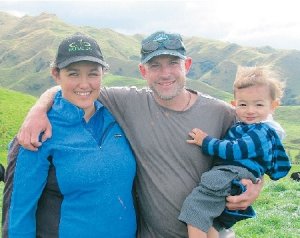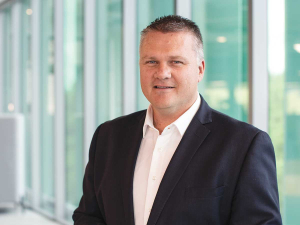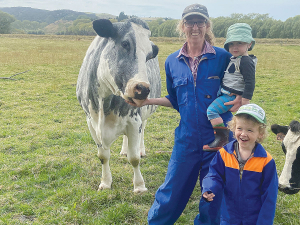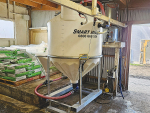The farm is unusual: 60% rolling hill country and only 40% on flats. You could be forgiven for thinking you were on a sheep farm. But the amount and quality of the grass is the giveaway.
The farm owner, Paul Franklin, says he bought it after a consultant kept badgering him about a farm with a lot of potential for sale at Eketahuna. His first reaction was he didn't want to farm there of all places, but he came down from Hawke's Bay where he owns two other farms to look it over anyway. He quickly recognised the potential of the property and bought it.
On his other farms, Franklin milks twice a day but he had his own reason for going OAD on this property, he says.
"To go OAD you have to have some limiting factor: you can't get staff, you've got long walks for the cows or you've got adverse climate. On this farm you have an adverse climate in the spring, quite a bit of walking and, let's face it, not everyone wants to live in Eketahuna."
The farm has two herds and Franklin immediately put one of these on OAD then, after a difficult season, he put both herds on OAD. There was huge development work to be done: fencing, pasture renewal and getting the right cows.
At the same time as Franklin bought the farm five years ago, he hired Dale and Sherryn Marshall as managers. Sherryn had worked for Paul, and both she and Dale were looking to step up in the industry so they took the job – and have also come to like Eketahuna.
For them it was an instant challenge to develop a run-down property. "For example there was a very poor water supply for the cows, we had power problems, poor infrastructure and because of poor subdivision there were creeks in every paddock. We lost a lot of cows," says Sherryn
Marshalls have divided up the chores on the farm. Sherryn looks after cowshed management including taking care of the calves, dealing with animal health issues and mating. Dale sees to feeding the cows and all aspects of pasture management, and calving. The herd with the younger cows is grazed on the hill areas, remaining there longer to eat out the grass. The older ones are nearer the shed. PKE supplements are fed out.
When they arrived they found the cows had come from four different herds. Sherryn culled heavily in the early years to get rid of a mastitis problem and this has worked.
In a short time production has shot up, says Sherryn. "The first year we did 102,000kgMS, the next year 154,000kgMS, then 172,000kgMS, last year 160,000kgMS and this year we are targeting 190,000 kgMS."
As well as better cows, Dale points out re-grassing – 30ha each year – has also been a big help. And they plant turnips.
The Marshalls have signed to manage the farm for another year and are discussing with owner Paul Franklin what direction the farm may take during that year. Options include dropping stock numbers and becoming a lower input farm, but retaining the same level of profitability.
Both the Marshalls are now firm advocates of OAD. They like the flexibility it offers and say it is more sustainable. Franklin says OAD has many hidden profit points. It's not just about lower input costs. He also notes a very low empty rate on the farm – just 6% - and the cows remaining in good condition through winter.















